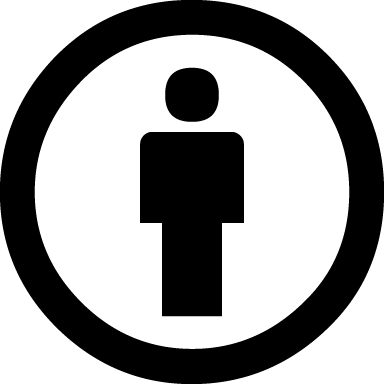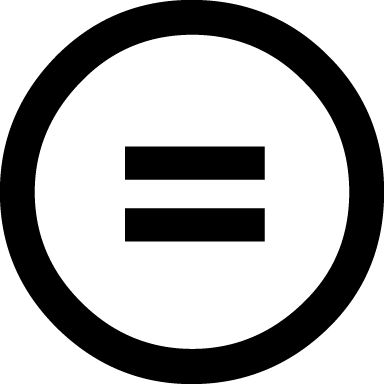OER, Copyright, and Creative Commons Licenses
Please note: The content on this page is informational only and is not intended to be legal advice. Additionally, while this page provides a wide range of information it is not intended to be comprehensive nor exhaustive.
Overview
In the U.S. Copyright is automatic and does not require registration. Works for which Copyright has expired are in the public domain. Creative Commons (CC) licenses make it easy to grant permissions for others to reuse work, without the need to ask. All CC licenses require attribution when a creative work is reused, and some CC licenses restrict commercial use or modification.
The information above is adapted from Knowledge Check in UH OER Training by William Meinke, CC BY 4.0.
Differences Between CC Licenses
This section is adapted from CC License Conditions by William Meinke, CC BY 4.0.
There are six different Creative Commons (CC) licenses that are useful combinations of conditions, all including the primary condition of Attribution. Understanding the meaning of each condition is vital when remixing, adapting, or revising someone else's existing OER. It is also useful when deciding which CC license to use when licensing your own work.
CC license conditions in short form are pronounced:
- BY (bye)
- SA (es-say)
- NC (en-see)
- ND (en-dee)

Attribution (BY)
The Attribution (BY) condition is fundamental to all CC licenses. What many creators care about most is receiving credit for their creative work, and so when reusing CC-licensed work, proper attribution must be given to the original creator -- and to other contributors on the work, if any.

Share-Alike (SA)
The Share-Alike condition adds a requirement for anyone reusing your work to also license their own creation (based on your work) under the same or compatible license. Both the CC BY-SA and CC BY-NC-SA licenses include this condition, effectively making them 'copyleft' or 'viral' licenses. While this condition effectively "locks open" the content, remixing SA content with non-SA or other-SA licensed work may not be straightforward or allowed at all.

Non-Commercial (NC)
The Non-Commercial condition allows for reuse and sharing, but reserves commercial rights for the creator. The meaning of the NC condition itself and its ability to prevent commercial reuse is not always clear, but the license condition does clearly indicate that commercial reuse rights are not being granted.
Note: CC licenses allow certain kinds of reuse, and do not discriminate against the user.

No-Derivatives (ND)
The No-Derivatives condition allows sharing and reuse but only if the content is left unchanged. This presents an issue when searching for OER, as no customization or adaptation is allowed by the license. For this reason, ND content is not considered OER and should be considered for reuse only in situations where no adaptations are needed.
Combining the Conditions
The BY condition is a part of all the licenses, but not all of them work together. For example, the SA and ND conditions do not appear in the same license because there is no reason to include the share-alike condition when no derivatives are being allowed. Together, the conditions form the six CC licenses:- CC BY
- CC BY-SA
- CC BY-NC
- CC BY-NC-SA
- CC BY-ND
- CC BY-NC-ND
To Recap: All CC licenses include the Attribution (BY) condition, requiring credit to be given to the creator. Some CC licenses include a Share-Alike (SA) condition, which requires all derivative work to carry the same license. To share your work openly but without commercial permissions, the Non-Commercial (NC) licenses can be used. The license condition that prevents modifying the work (and therefore is not suitable for OER) is called No-Derivatives (ND).
If you have further questions about how to a select a license for your work, you can visit Creative Common’s license chooser tool which will step you through the process or you can reach out to Jen Hughes for a consultation.
Attribution: A Legal Requirement of CC Licenses
Frequently individuals have questions about the difference between an Attribution and a Citation.
- They are similar concepts
- Both attribution and citation give credit to others.
- Attributions give credit when you reuse or reproduce someone else's work and are a legal requirement of using openly licensed material beyond what would typically be considered appropriate for citing (such as a quotation).
- Citations give credit when you use someone else's ideas or words in your own work and are used when quoting, summarizing, or paraphrasing. This can apply to copyrighted works, openly licensed works, or public domain works.
The following chart provides more clarification about the differences between attributions and citations.
| Citation | Attribution |
|---|---|
| Academic and legal purposes (plagiarism and copyright infringement). | Legal purposes (e.g., rules of Creative Commons licenses). |
| The rights of the copy (meaning copyright) are NOT shared with the general public by the copyright holder. | Copyright IS shared with the general public by the copyright holder by marking the work with an open-copyright license. |
| Protects an author who wants to refer to a restricted work by another author. | Author of an open work has given advanced permissions to use their work. |
| Used to quote or paraphrase a limited portion of a restricted work. | Used to quote (or paraphrase) all or a portion of an openly licensed work. |
| Can paraphrase, but cannot change work without permission. | Author has give advanced permission to change work. |
| Many citation styles are available: APA, Chicago, MLA. | Attribution statement styles are still emerging, but there are some defined best practices. (TASL) |
| A reference list of cited resources are typically placed at the end of the book. | Attribution statements are found on the same page as the resource. |
This chart is adapted from “Citation vs. Attribution” from Self-Publishing Guide by Lauri M. Aesoph, BCcampus, CC BY 4.0.
Good Practices for Attributions When Adapting, Remixing, or Authoring an OER
The following concepts are vital for conveying to your audience, as well as downstream users of your OER, the licensing and permissions within your OER. Note: this applies to any OER regardless of format, so if you're using existing OER content in a video, graphic, or written work, these practices still apply.
Attributing When Using or Adapting Existing OER
When adapting or remixing existing OER, it is important to keep track of which sections of your new OER are taken from other openly licensed sources. For example, the first two sections of this webpage are taken from existing OERs. To recognize the original OER authors and credit their work, attribution statements were included in the text. Likewise, the "Citation vs. Attribution" chart is adapted from a different existing OER and has an attribution statement below the chart which reflects this. Just as you would keep track of quotations and paraphrases of traditionally copyrighted materials in an academic work for providing citations, remember to document in a similar manner within your OER any openly licensed materials you use or adapt.
This is important for two main reasons. 1) to provide proper attribution (and citations to traditionally copyrighted works as appropriate) and 2) to inform downstream users of your OER what they can and cannot legally do with your OER.
- In the following example, imagine that you are remixing content from 3 different existing openly licensed sources with your own original work. Thorough attribution would involve clarifying within your new OER that:
- In Chapter 1: Paragraphs 3 & 4 are adapted from OER A, but the remainder of the chapter is your original content.
- In Chapter 2: Section 1 is from OER B, but the remainder of the chapter is adapted from OER A.
- In Chapter 3: the entire chapter is adapted from OER B.
- In Chapter 4: the entire chapter is your original content, except for the graphics which are from OER C.
If you have questions about this, please reach out to Jen Hughes for assistance.
Importance of Including the “Except Where Otherwise Noted” Clause in Your OER's Attribution Statement
Below is an example of an OER attribution statement. Notice that the clause "except where otherwise noted" has been included.
Library OER Support Guidelines by Jen Hughes is licensed under a Creative Commons Attribution 4.0 International License, except where otherwise noted.
The inclusion of "except where otherwise noted" is extremely useful as it allows you to incorporate content in your OER that does not necessarily utilize the same license as the license you have chosen for your OER. For example, the OER example above has a CC BY 4.0 license and by including the clause "except where otherwise noted" it notifies downstream users that some of the content, such as images or charts, may be: under a different CC license, in the public domain, or used pursuant to fair use in the United States. From a legal perspective, this clause helps to clarify that you are not claiming copyright over all the content in your OER, just the content that you created.
OER, Fair Use, and the Public Domain
Clearly identifying fair use and public domain content in your OER is very important so that:
- You explicitly acknowledge what content in your OER is used pursuant to fair use or in the public domain, and
- Downstream users who may be at an institution with different fair use thresholds, or in a different country with different laws related to fair use and the public domain, know what content they may have to alter if adapting your OER.
Here are some examples of ways to denote fair use and public domain content. Although not required, it is helpful to downstream users if you clarify in your statement why the content you are including is considered fair use of in the public domain.
Fair Use Marking Example
- Screenshot of app, used pursuant to fair use - comment and criticism to teach students about user interface design.
- This described screenshot is intended for teaching user interface design using a small part of the overall work. As it lacks the interactivity of the original app (or website), it is not likely to affect the potential market for the copyrighted work. In comparison, a screenshot of a film or television still might have a larger impact on the potential market for or value of the copyrighted work because people do purchase film or television stills. When weighing out your fair use assessment, be sure to consider all four factors.
Public Domain Marking Examples
- The School of Athens by Raffaello Sanzio da Urbino, in the public domain because Raffaello died in 1520.
- Mimosa Pudica by Hrushikesh, CC0.
- Note: CC0 is the Public Domain Dedication from Creative Commons. This means that the person who associated a work with this deed has dedicated the work to the public domain by waiving all their rights to the work worldwide under copyright law, including all related and neighboring rights, to the extent allowed by law. So, CC0 works are similar to works that have fallen into the public domain, but legally different.
Terms of Service
When using third-party tools to create images, charts, graphs or other materials to include in your OER, make sure to read the Terms of Service (ToS) or Terms and Conditions (T&Cs) carefully. Some tools or sites, like meme or graph generators, have Terms that limit your ability for reuse in an OER, even with proper citation or attribution (as appropriate).
Links to Resources
Attributions Best Practices - Handout.
OER Copyright Checklist - Provides guidance and examples of good practices for attributions and addressing copyright concerns throughout the OER creation process.
Student Release of Course Materials - Useful for Faculty engaging with Open Pedagogy. Allows students to easily provide documentation of their openly licensed work.
Best Practices in Fair Use for Open Educational Resources - This document is intended to support faculty, staff, and all open educators in evaluating when and how they can incorporate third party copyright materials into Open Educational Resources to meet their pedagogical goals.
Interested in exploring OER further or getting involved with OER at the College? Please reach out to Andrea Scott, OER Coordinator, for further information or a consultation.